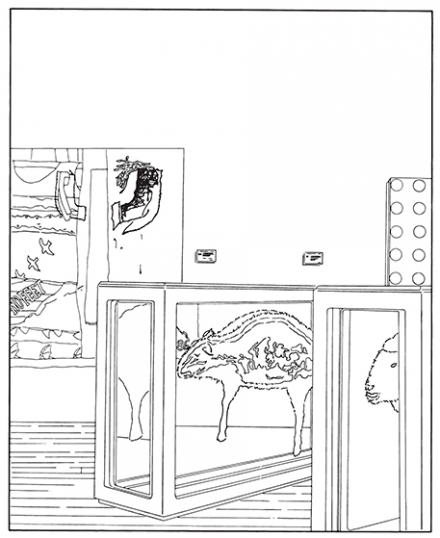
Louise Lawler, Dots and Slices (Traced) (2006/2013), via Sprüth Magers
In 2013, Louise Lawler performed a series of “tracings” at the Museum Ludwig in Cologne, taking previously executed photographs from Lawler’s broad body of work, and converting the image down to a simple vector graphic in partnership with artist and children’s book illustrator Jon Buller. These tracings are currently the subject of the artist’s most recent solo exhibition at Sprüth Magers Berlin, as Levine returns to her particularly subtle brand of institutional critique.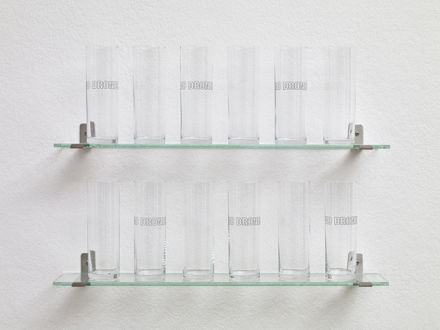
Louise Lawler, No Drones (2013), via Sprüth Magers
The images, scalable works that can be adapted and resized for any exhibition space, feature a combination of banal architectural signifiers, immediately recognizable artworks (her famous Pollock and Tureen work is one of her subjects), and living spaces, each of which is constantly in negotiation with the other objects in the room. Much akin to Lawler’s original works, which reduce the artwork to geometric forms in architectural space, the pieces here take the next presumable step, reducing all graphic information to a series of simplified values in line, density and position.
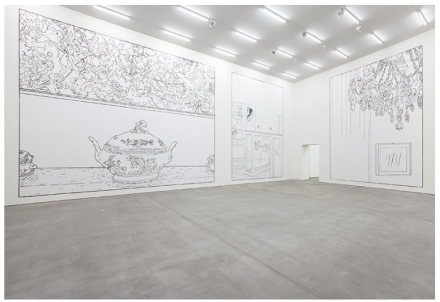
Louise Lawler, No Drones (Installation View), via Sprüth Magers
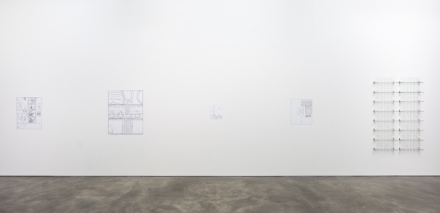
Louise Lawler, No Drones (Installation View), via Sprüth Magers
The result is at times striking, and at others sarcastic. In Dots and Slices, for instance, a bisected lamb sculpture by Damien Hirst takes on a comical new turn, as its perverse detail is converted to a cartoonish oversimplification. In other works, like Polyanna, the dimensions and depths of the work short circuit the composition of the image, leaving a Takashi Murakami sculpture hovering over the picture plane, with little explanation as to why it looms so large over the rest of the image.
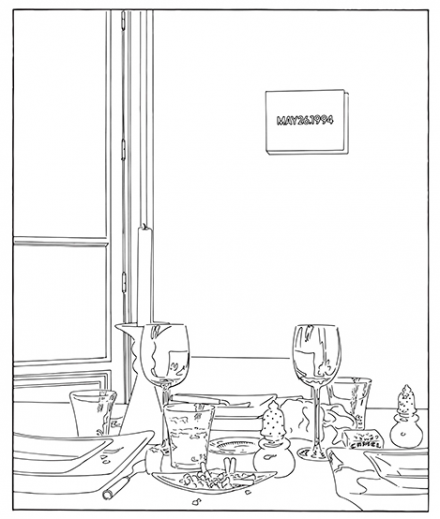
Louise Lawler, Still Life (Candle) (Traced) (2003/2013), via Sprüth Magers
Levine’s conversion of her own work into what could be considered a childish analog, a coloring book-style graphic meant for mass market consumption, seems to alternate between self-critique and the original fascination with the prestige and aura afforded contemporary art. Levine even plays into this concept by painting in details in a number of works with blots of color.
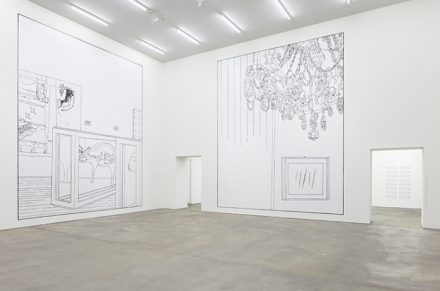
Louise Lawler, No Drones (Installation View), via Sprüth Magers
But at the same time, the exhibition also drives at the notions of scalability and reproduction themselves as aspects of the market’s endless reproducibility. Levine has turned her previously editioned images into a series of non-specific environments, facile spaces resized and installed in any exhibition space, a sort of commoditized, environmental wallpaper. While the image remains recognizable, its lack of color and dimension constantly challenges its authenticity, leaving the viewer wanting more, or longing for a physical landscape which may no longer exist.
Lawler’s exhibition closes on January 17th.
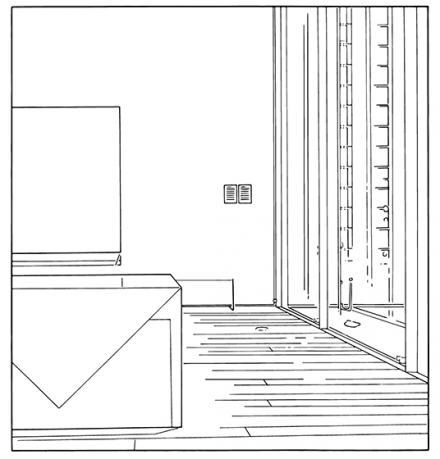
Louise Lawler, Formica (Traced) (2011/2012/2014), via Sprüth Magers
— D. Creahan
Read more:
Louise Lawler: “No Drones” [Sprüth Magers]



